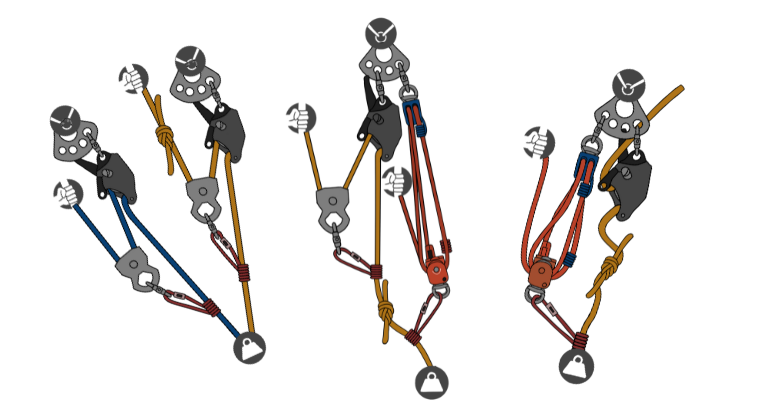Knot Pass Through a System: Essential Techniques for Rope Rescue Operations
In technical rope rescue, passing a knot through a system is a critical skill. Whether lowering or raising a load, encountering a knot can disrupt operations and compromise safety if not managed correctly. Mastering this technique ensures continuous system functionality and minimizes risks, making it a cornerstone of advanced rope rescue training.
This article explores the technical considerations and practical applications of passing a knot through various rescue systems, highlighting why this skill is vital in meeting operational challenges.
Why Passing a Knot Matters
1. Ensuring Continuity in Operations
Knots are often necessary to extend rope length or bypass damaged sections. Passing these knots without interruption is critical to maintaining the flow of a rescue operation, especially under high-stress conditions.
2. Managing Rope Integrity
Knots inherently weaken a rope by 10% to 50%, depending on the type of knot. Safely passing a knot redistributes tension across the system, preserving overall rope integrity and reducing potential failure points.
3. Overcoming Length Restrictions
In situations where rope length is insufficient, knots are used to join additional sections. Passing these knots through devices ensures the operation continues seamlessly without requiring new equipment or a complete system reset.
4. Enhancing System Versatility
The ability to pass knots increases the adaptability of a single rope system. This is particularly useful in complex scenarios where multiple functions—anchors, length adjustments, or load transitions—are required within the same setup.
5. Building Proficiency Under Load
Knot passing develops critical thinking and practical skills under dynamic conditions. Rescuers gain confidence in handling real-world scenarios where unforeseen challenges demand swift, precise actions.
Key Techniques for Passing a Knot
The process of passing a knot varies depending on the system in use—raising, lowering, or belay. Below are the fundamental steps for each scenario:
1. Lowering Through a Knot
- Stop lowering when the knot is approximately 0.5 meters above the descent control device (e.g., Clutch).
- Create a temporary anchor using a load release strap or Prusik hitch to transfer the load from the primary rope.
- Once the load is secure, reroute the rope so the knot passes below the device.
- Gradually transfer the load back onto the descent control device and remove the temporary anchor.
Explore more about lowering systems in rope rescue.
2. Raising Through a Knot
- Halt the raising process before the knot enters the raising system (e.g., pulley).
- Secure the load using a backup device, such as a Prusik hitch or belay system.
- Adjust the rope to move the knot through the pulley or raising device.
- Ensure the knot is below the raising device, then transfer the load back to the primary rope system.
Learn about raising systems and techniques.
3. Passing a Knot Through a Belay System
- Stop the operation when the knot approaches the belay device (e.g., MPD or ID).
- Create redundancy using a secondary belay point to secure the load.
- Reposition the rope so the knot is moved below the belay device.
- Return the load to the primary belay system and remove the secondary anchor.
Discover more about belay device applications.
Safety Considerations for Knot Passing
- Redundancy: Always secure the load with a backup system before transferring tension.
- Communication: Ensure all team members are aware of the process and timing to avoid confusion.
- Load Monitoring: Monitor the load carefully during transitions to prevent sudden shifts or instability.
- Equipment Checks: Verify the integrity of all devices and connections before and after knot passing.
Read more about safety in rope rescue operations.
Practical Applications in Rope Rescue
Passing a knot is not limited to theoretical training; it has critical real-world applications:
- Damaged Rope Bypass: Allows operations to continue safely when a rope segment is compromised.
- Extended Rope Length: Enables smooth transitions when additional rope is joined mid-operation.
- Complex System Adjustments: Provides adaptability in intricate systems requiring frequent reconfigurations.
Learn how to manage complex rope systems effectively.
Conclusion
Knot passing is an indispensable skill in rope rescue operations, ensuring continuity, safety, and adaptability in high-stakes environments. By mastering these techniques, rescue teams can handle unexpected challenges with confidence and precision, maintaining operational flow and safeguarding lives in the process.
For more on advanced rope rescue techniques, explore detailed guides on raising and lowering systems and belay device applications.










